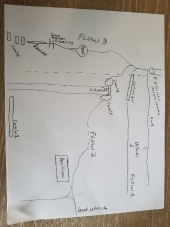




CA, Southern Sierras, alt. 4550 feet, zone 9ish. (still figuring it out), 3 mo. grow season. Regular wind to 20 mph. SANDY soil with scrub oak,pine,and juniper. 2 seasonal creeks.




Idle dreamer




CA, Southern Sierras, alt. 4550 feet, zone 9ish. (still figuring it out), 3 mo. grow season. Regular wind to 20 mph. SANDY soil with scrub oak,pine,and juniper. 2 seasonal creeks.




Idle dreamer




Idle dreamer








 1
1








CA, Southern Sierras, alt. 4550 feet, zone 9ish. (still figuring it out), 3 mo. grow season. Regular wind to 20 mph. SANDY soil with scrub oak,pine,and juniper. 2 seasonal creeks.




CA, Southern Sierras, alt. 4550 feet, zone 9ish. (still figuring it out), 3 mo. grow season. Regular wind to 20 mph. SANDY soil with scrub oak,pine,and juniper. 2 seasonal creeks.





Paul Cereghino- Ecosystem Guild
Maritime Temperate Coniferous Rainforest - Mild Wet Winter, Dry Summer




Idle dreamer
 1
1




Whole Systems Design, Consultation, Education, Group Facilitation
Profile Link: Permaculture Global
Director: Permaculture Research Institute, USA
Holistic Management Certified Educator




Owen Hablutzel wrote:the Quail Springs course
Idle dreamer




Brenda
Bloom where you are planted.
http://restfultrailsfoodforestgarden.blogspot.com/
 1
1




CA, Southern Sierras, alt. 4550 feet, zone 9ish. (still figuring it out), 3 mo. grow season. Regular wind to 20 mph. SANDY soil with scrub oak,pine,and juniper. 2 seasonal creeks.








CA, Southern Sierras, alt. 4550 feet, zone 9ish. (still figuring it out), 3 mo. grow season. Regular wind to 20 mph. SANDY soil with scrub oak,pine,and juniper. 2 seasonal creeks.





|
What are you saying? I thought you said that Santa gave you that. And this tiny ad:
Homestead Pigs Course
https://permies.com/wiki/365748/Homestead-Pigs
|





